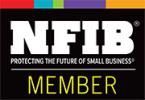Tax Rebate Progams for Upgrading to Spray Foam Insulation
Tax Credits and Rebates for Homeowners
Now’s the perfect time to invest in insulation and air sealing! With new federal tax credits available until 2032, you can get up to $1,200 every year to help cover the cost of energy-efficient upgrades for your home. Take a look at some of the great ways these tax credits and rebates can help lower your project costs!
Residential Efficiency Tax Credit
The Residential Efficiency Tax Credit lets homeowners claim 30% of the cost of insulation and air sealing materials, up to $1,200 per year, for upgrades made to their primary residence. You can take advantage of this credit every year until December 31, 2032. After you’ve installed the materials, just fill out IRS Form 5695 to apply for the credit.
Learn more about the federal insulation tax credit here.
Rebates through the HOMES Act
Homeowners can snag some great rebates for making performance-based energy upgrades. Here’s how the savings break down:
- If your home achieves 20-35% modeled energy savings, you can get a rebate of either $2,000 or 50% of the project cost, whichever is less.
- For 35% or more modeled energy savings, the rebate goes up to $4,000 or 50% of the project cost.
- If you see at least 15% measured energy savings, you’ll get a rebate based on the kWh saved, with $2,000 for a 20% reduction or 50% of the project cost.
- It’s a great way to save while boosting your home’s efficiency!
Department of Energy (DOE) Electrification Program
The DOE Electrification Program offers some great rebates for insulation, air sealing, and ventilation upgrades if you’re eligible. Here’s how it works:
- If your household income is 80-150% of the area median, you can get 50% of the insulation cost, up to $1,600.
- If your income is less than 80% of the area median, you could qualify for 100% of the cost, up to $1,600.
Want to see if you qualify for these or other rebates? Check out www.dsireusa.org!
Tax Credits for Builders
The federal government has boosted the financial incentives for builders who focus on energy-efficient homes and structures. Starting January 1, 2023, new homes and units qualify for a base-level tax credit if they meet ENERGY STAR® certification for single-family, manufactured, and multifamily homes. For single-family homes, you can also qualify if the project meets either ENERGY STAR or Zero Energy Ready Home requirements. It's a great way to get rewarded for building greener!.
Take Advantage of the Residential Efficiency Tax Credit
Builders can take advantage of a $2,500 credit for single-family homes that meet ENERGY STAR® Version 3.1 standards. If your homes meet the Department of Energy’s Zero Energy Ready Home Program, the credit jumps to $5,000.
For certified multifamily units, there’s a $500/$1,000 credit, but this increases to $2,500/$5,000 if you meet prevailing wage requirements. Producers of manufactured homes can also get a $2,500 tax credit by meeting the ENERGY STAR Manufactured New Homes program standards.
These tax credits are available until December 31, 2032. Be sure to talk to your tax professional for details on how to qualify and claim these credits.
Revolutionize your living experience with our top-tier spray foam insulation service, designed to elevate your home's energy efficiency and comfort levels to new heights. Our dedicated team of professionals brings years of expertise to every project, ensuring precise installation of high-quality spray foam insulation throughout your entire home. Bid farewell to pesky drafts, soaring energy bills, and uneven indoor temperatures as our meticulously applied insulation seals every nook and cranny, creating a cozy and consistent climate year-round. Not only does our insulation solution enhance your comfort, but it also promotes environmental sustainability by reducing energy waste and lowering your carbon footprint. Rest easy knowing that our comprehensive insulation package is tailored to suit your home's specific needs, providing lasting performance and peace of mind for you and your family. Experience the transformative power of superior insulation with our trusted service. Interested in knowing more? Check out our Blog!





